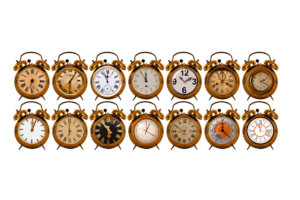
In the first of our two-part look at how a song is structured, we explore how a song can be set out. Look out for our next blog, which will take a look at musical punctuation and what is used to help the song flow.
We all have our favourite songs and listen to them repeatedly but have you ever really thought about the construction behind it?
The Blueprint
While instruments and lyric really make a song, there is actually a structure behind most songs, with sections arranged to express the songwriter’s creativity and emotion.
In simplicity, there are usually eight sections in a song:
Intro
Verse
Refrain
Chorus
Hook
Break
Outro
This simple structure can then be adapted – except usually the intro and outro, although that is not a hard and fast rule – to fit the songwriter’s needs.
Since the evolution of pop music, the most common structure is: verse, chorus and middle eight, or often referred to as ABABCBB. This will probably feel familiar to most and looks like:
Intro – can be unique or a repeat of a verse or chorus
Verse 1 – usually a straightforward structure, containing four to 8 chords
Chorus 1 – similar to the verse containing four to eight chords, however, with more power via voice or instrument
Verse 2 – same structure as other verses, four to eight chords
Chorus 2 – repeat
Middle 8 – literally a bridge-between the verse and the chorus, or the chorus and the verse
Chorus 3 – repeat
Chorus out – often a repeat of the verse or chorus
Variants
There are many variants of this classic pop structure. For example, ABCABCBC, containing verse1/bridge1/chorus1/verse2/bridge2/chorus 2/instrumental (usually based on the bridge)/chorus 3.
Other structures can be completely different, for example, Somewhere Over the Rainbow, which has the structure AABA: verse 1/verse 2/bridge/verse 1. Or, entirely unique as in Bridge Over Troubled Water by Simon and Garfunkel, with an AAA structure. Often more old-fashioned examples include ABAC, Moon River, or ABCD, found in Rodgers and Hammerstein’s You’ll Never Walk Alone.
More modern songs really mix up the structure and use the chorus as the intro, When You Were Young by the Killers.
Minutes and Seconds
The other notable structure of a song is its length. The most popular song length for radio play is three minutes 30 seconds, with three minutes being the optimum time to make the song memorable in a listener’s mind. However, as with song structure, it really is down to the creativity of the song writer but song length can be traced back to the beginning of recording music.
From 1858 to the late 1950s, recorded songs were called a ‘78’ because it spun at 78 revolutions per minute (rpm). This also limited the length of the song, because only so much music could fit. At speed 78, songs came in two sizes: 10-inch that held three minutes of music and 12-inch that held four.
However, in 1949, the record company RCA introduced a 45 rpm disk that quickly overtook the 78 and made it obsolete, largely due to being made of vinyl instead of shellac, which made them more durable, portable, cheaper to make and consequently cheaper to buy as the pop music revolution began and teenagers were the largest consumer market.

Still at an average length of three minutes, this launched the concept of a ‘single’, as for a band to get its songs played on the radio, it needed to have a 45. The songs that came out immediately after the creation of the 45, defined pop music for decades, with all of Elvis’s singles sold on 45, as were the singles of The Beatles, The Rolling Stones, and Pink Floyd, for example.
Despite the technological advances we have today, with digital downloads, the average length of a song remains at under five minutes and generally three minutes 30 seconds. However, there is always an exception to the norm. Examples of extended song lengths include The Chemical Brothers with Galvanise at 6.34 minutes, Fatboy Slim with The Rockerfella Skank at 6.53 minutes, and Muse with Knights of Cyndonia at 6.03 minutes.
However, older artists have recorded longer songs with both Rush and Jimi Hendrix with 20-minute-long songs, while Pink Floyd, Led Zepplin, and Bob Dylan all have 10-minute songs.
Harmeet March 12th, 2018
Posted In: Uncategorised